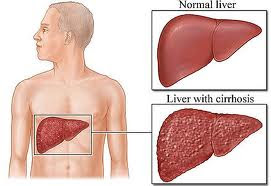World Hepatitis Day is marked on 28 July each year. Campaigns carried out so that people are more aware about the causes of hepatitis and hepatitis.

Types of Hepatitis
Hepatitis means swelling of the liver. There are 7 types of hepatitis are marked with the letters A through G. There are 4 types that are often encountered, namely:1. Hepatitis A,
2. Hepatitis B,
3. Hepatitis C and
4. Hepatitis E.
Over the whole virus can cause acute illness with symptoms that can last several weeks, such as skin color, and yellow eyes, dark urine, feeling very tired, nausea, vomiting and abdominal pain.
Because hepatitis B and C usually do not cause specific symptoms, so many people are not aware of the disease, until the later onset of symptoms of cirrhosis or liver cancer within a few years later. About 65 percent of patients with hepatitis B and 75 percent of people with hepatitis C do not know they are infected.
"Viral Hepatitis take priority resources and efforts. Surveillance is the key to good control. Hepatitis B immunization in children should be able to cover 95 per cent," remarked by WHO Regional Director for Southeast Asia Dr Samlee Plianbangchang. "Examination of hepatitis B and C the blood and blood products should be standard procedure, "he added.
Hepatitis A and hepatitis E is also a serious health problem. In Southeast Asia, every year there are approximately 12 million cases of hepatitis E. This amount is half of hepatitis E in the whole world. The extent of the population infected, especially if the cause of the outbreak, would cause serious health problems.
Both diseases are accelerated its spread through contaminated food and water in an unhealthy environment. In most countries of Southeast Asia, the pace of development trigger the acceleration of urbanization. Dense urban areas is the right environment for the spread of this hepatitis virus.
-SMALL.gif)

.jpg)
0 comments:
Post a Comment
Note: Only a member of this blog may post a comment.